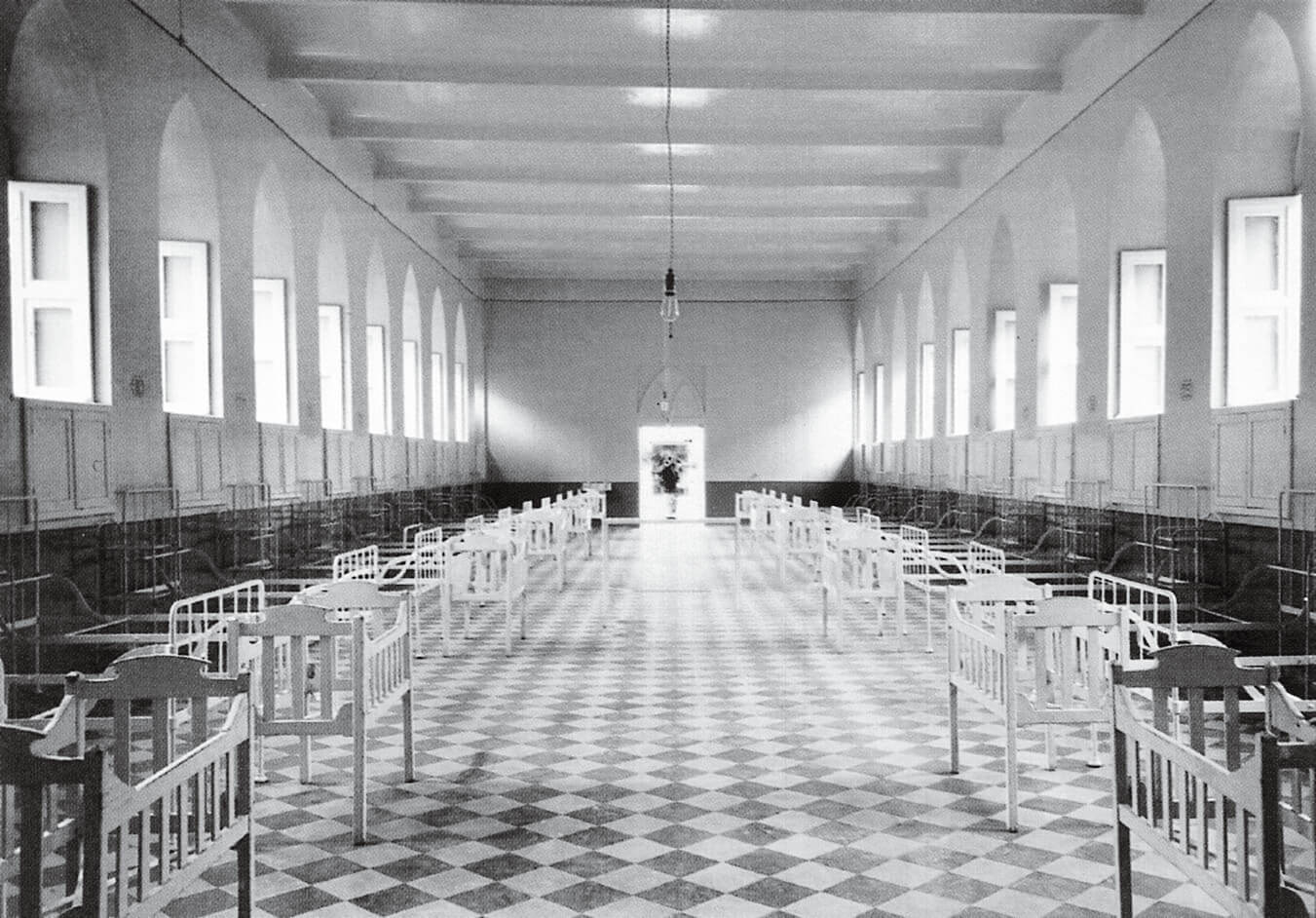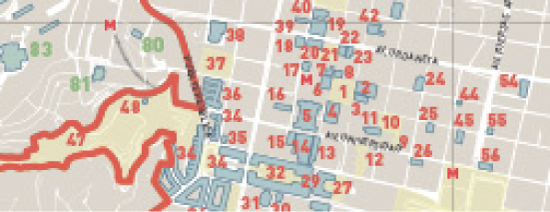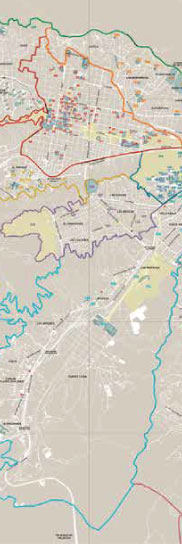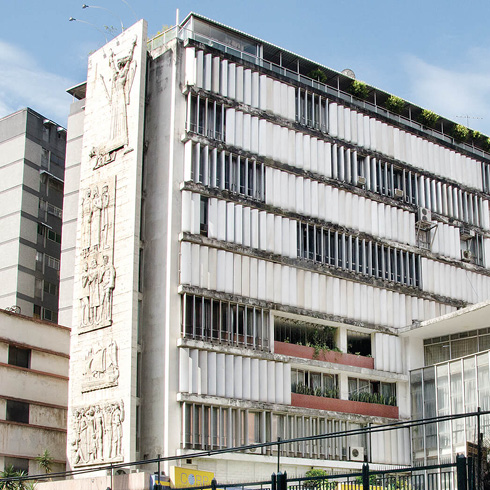DF-52
Vargas Hospital, built north of the city at the end of the Cathedral-Pantheon axis, was the first urban building occupying two blocks. By the end of the nineteenth century, Caracas had 70,625 inhabitants and a critical public health situation that decimated the population. In August 1888, Juan Pablo Rojas Paúl ordered the establishment of «a national hospital for men and women with at least one thousand beds, having analogous construction and similar regime to the Lariboissiere Hospital in Paris». The one-level building was designed with a north to south orientation, with the main entrance to the west. Its symmetrical floor plan has a central element (head offices, amphitheater, outpatient rooms and operating rooms, besides storage and kitchen) from which two wings extend (repeating the Lariboissiere scheme): one for men and one for women. Each wing has two rows of five rooms for 22 patients each, facing each other and separated by a long garden. Opened in 1891 by President Raimundo Andueza Palacio, the hospital initiated modern medicine in the country and became the main learning center in this discipline. The country’s most outstanding physicians practiced medicine there. The statue of Doctor José María Vargas, one of the most country’s notable civilian heroes, by artist Eloy Palacios, dominates the central courtyard.

FFU
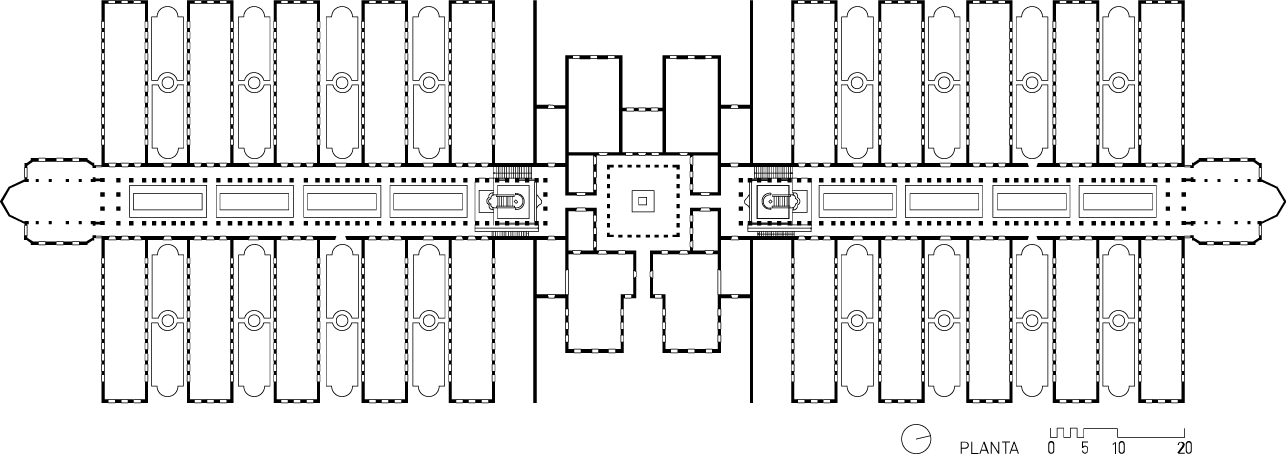
planta


